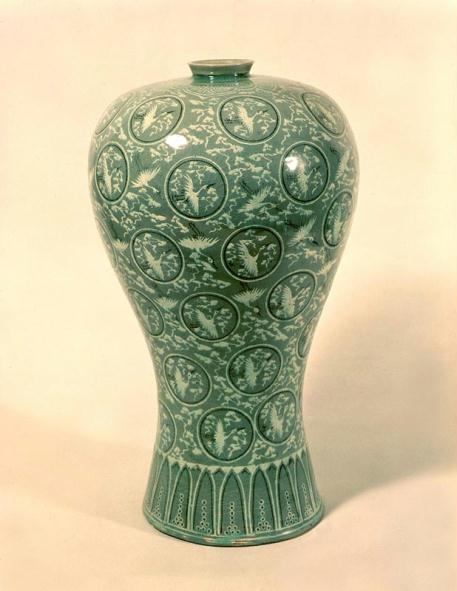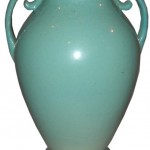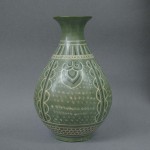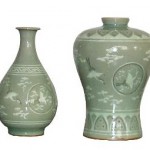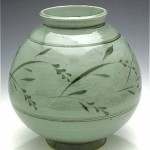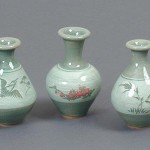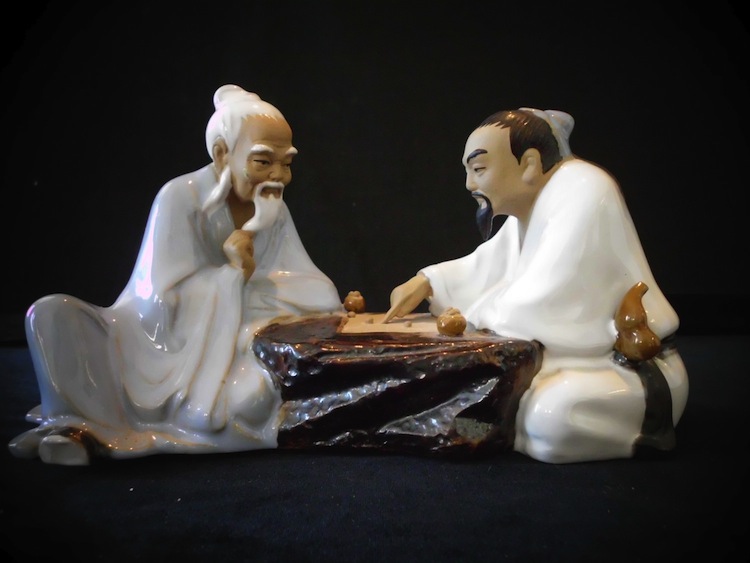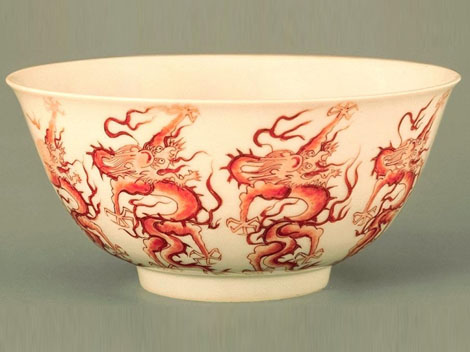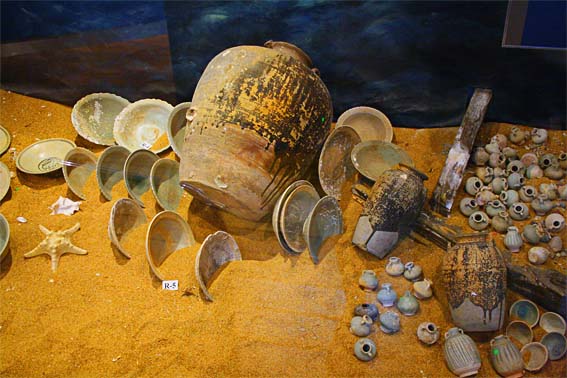Celadon, a famous type of ancient Chinese stoneware, came into being during the period of the Five Dynasties (907-960). It is characterized by simple but refined shapes, jade-like glaze, solid substance and a distinctive style. As the celadon ware produced in Longquan County. Zhejiang Province, is most valued, so it is also generally called Longquan qingci. Its Chinese name, qingci, means greenish porcelain.
Why then is it known in the West as ‘Celadon”. Celadon was the hero of the French writer Honore Urfe’s romance L’ Astree (1610) the lover of the heroine Astree. He was represented as a young man in green and his dress became all the rage in Europe. And it was just about this time that the Chinese Qingci made its debut in Paris and won acclaim. People compared its colour to Celadon’s suit and started to call the porcelain ” celadon”, a name which has stuck and spread to other countries.
Now, new products of Longquan qingci have been developed to radiate with fresh lustre which include eggshell china and under glazed painting.
Celadon pottery, with its characteristic clear jade colour and elegant curves, originated in Korea hundreds of years ago. The glazing process was perfected through precisely mixed clay, wood ash glaze, and double firing in a specially sealed kiln.
Earthenware begins as wet, moulded clay that can be fired with or without glaze. Celadon pottery is baked twice in a kiln to give it that unique colour and sheen.
Early potters found that special river clay kept its shape and also supported glaze. First they formed the shape of the vase, bowl or box. Then the plain object was fired in a large kiln at 1400° F (750° C). After the piece hardened, it was removed and coated with a glaze rich in calcium carbonate. Returning to the kiln for a second firing at 2400° F (1300° C), the muddy glaze fired to a gorgeous sage green.
Ceramicists had to be very careful about the temperature of the kiln. No thermometers existed and still they could keep the chamber at an even temperature for hours, only using wood for fuel. Also, the kiln had to be airtight to control the amount of oxygen present.
The second firing needed low amounts of oxygen and a higher concentration of carbon monoxide and carbon dioxide, otherwise, the clear glaze would oxidize into a murky brown. Tiny crackles, called “crazing,” are original to the glaze and don’t devalue the finish.
Celadon from Korea represented the finest work of artisans. Under King Injong and Uijong, during the 9th and 10th century, jade and celadon symbolized an afterlife full of wealth, peace, and honour.
Modern technology has never improved upon these flawless pieces. Although rare celadon from the Koryo Dynasty exhibits some of the most practised and perfected techniques of any culture.
The valuable celadon pottery of ancient Korea, China, Japan, and Thailand are preserved in many museums and cultural centres.

